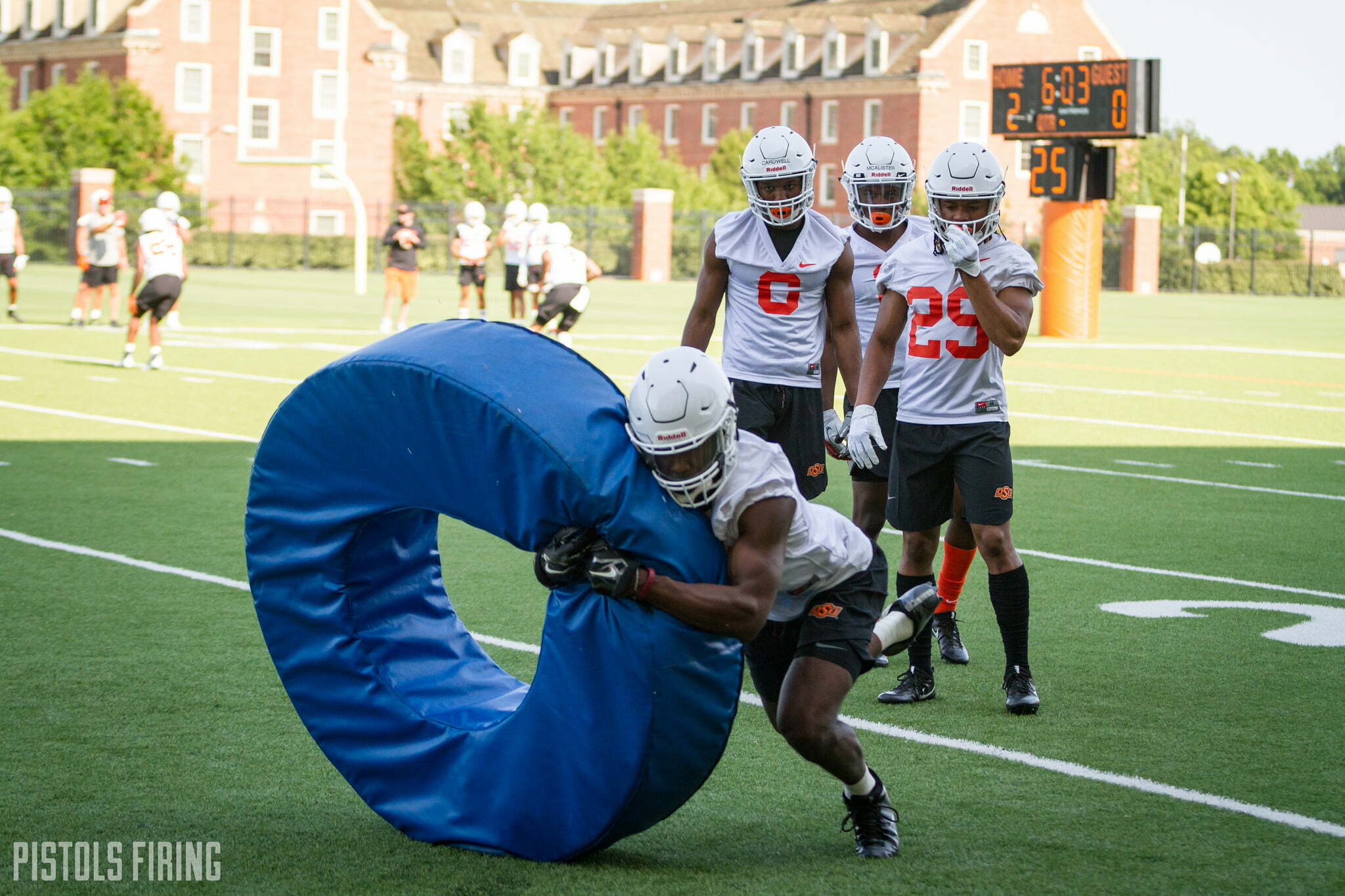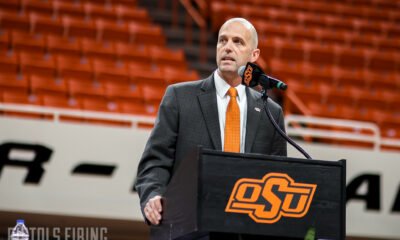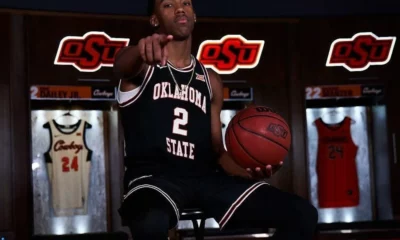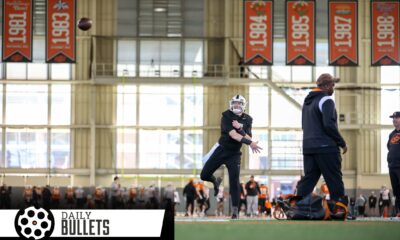Football
Philosophical Defensive Change Could Take Some Getting Used to for OSU Fans

If you were ranking the most common phrases you’ve heard from angry OSU fans over the last decade (or maybe ever), where would the following rank: I just wish they wouldn’t play that gosh-darned bend-but-don’t-break defense?
Pretty high, right? Like, maybe right behind why is Mike Yurcich the way that he is? but ahead of most everything else.
I’ve probably been there before, too. The 10-yard cushions from the corners. The 20-yard pickups on third down. I think OSU’s conservative nature on defense has been a little overstated — OSU was No. 68 in the country in 3rd down conversions allowed last year, just behind OU — but it has also been incredibly frustrating at times.
All of that is about to change.
As I was catching up on a little research for the 2018 season, I came across some really interesting stuff from Bill Connelly on Jim Knowles, his philosophy and how that’s going to affect the Cowboys.
First, some definitions.
Success Rate: A common Football Outsiders tool used to measure efficiency by determining whether every play of a given game was successful or not. The terms of success in college football: 50 percent of necessary yardage on first down, 70 percent on second down, and 100 percent on third and fourth down.
IsoPPP: An explosiveness measure derived from determining the equivalent point value of every yard line (based on the expected number of points an offense could expect to score from that yard line) and, therefore, every play of a given game. IsoPPP looks at only the per-play value of a team’s successful plays (as defined by the Success Rate definition above); its goal is to separate the explosiveness component from the efficiency component altogether.
Here’s Connelly.
A few years into his tenure as Duke’s defensive coordinator, Knowles evidently said, “You know what? Screw it. Attack.”
In 2014, Duke’s defense ranked 105th in success rate and third in IsoPPP explosiveness allowed, the prototypical bend-don’t-break profile. In 2017: 17th in success rate, 95th in IsoPPP. Considering efficiency is the most important, repeatable thing in football, this was a net gain for the Blue Devils, even if it resulted in some gashes.
When you’ve got a prolific offense and can absorb the occasional gash, this aggressive approach can be devastating. If you can force an extra couple of three-and-outs or turnovers per game, that’s a service break the other team just can’t cope with. You just have to make sure you’ve got the athletes to turn aggression into production. [SB Nation]
What did OSU lack in the games it lost last season? An ability to get stops on short possessions. In its three losses to TCU, OU and Kansas State last year, OSU allowed 11 (!) drives of nine plays or more. Seven of those drives were 5 minutes or longer. Not good!
More aggression will lead to more long TDs given up, but it should also lead to more momentum-swinging defensive stops. More opportunities to turn a 7-0 lead into 14-0 to start the second quarter after getting a team to go three and out from its own 10.
That is the vision, anyway.
The unintended benefit here is that OSU’s defensive players will likely not have to be on the field as much as they have been in the past. Only six Power 5 teams faced more plays on defense than OSU last year. Only 10 Power 5 teams were on the field for more time on defense. That’s likely to change this year as OSU takes more shots and either gets torched early or forces more disruption.
This is going to be … tough to swallow at times. People will call for Glenn Spencer to come back. Mike Gundy will be called names. Philosophically it has clearly been a change for players, but it will also be a flip from how fans consume games. There might be more shootouts, not fewer.
Here’s the upshot, though: Just as great golfers want tournaments to be as many holes as possible because with more holes comes a smoothing out of outlier outcomes, the same is true of great offenses. Oklahoma State’s offense (generally) should want games to be 100 possessions long because there are very few teams that are going to be able to roll with them offensively for that long. This defense is (probably) going to provide more possessions for the offense, which I think ultimately will be a great thing but could take a little (maybe a lot!) of getting used to.

-

 Football2 days ago
Football2 days agoFour-Star Quarterback Adam Schobel Commits to Oklahoma State, Flips from Baylor
-

 Hoops2 days ago
Hoops2 days ago‘Keep Turning Over the Rocks’: Looking at the Portal Landscape as Lutz Looks to Solidify His First OSU Roster
-

 Hoops2 days ago
Hoops2 days agoFour-Star Signee Jeremiah Johnson Reaffirms Commitment to Oklahoma State after Coaching Change
-

 Daily Bullets2 days ago
Daily Bullets2 days agoDaily Bullets (Apr. 23): Pokes Land Four-Star Quarterback, Retain Talent from Mike Boynton Era






